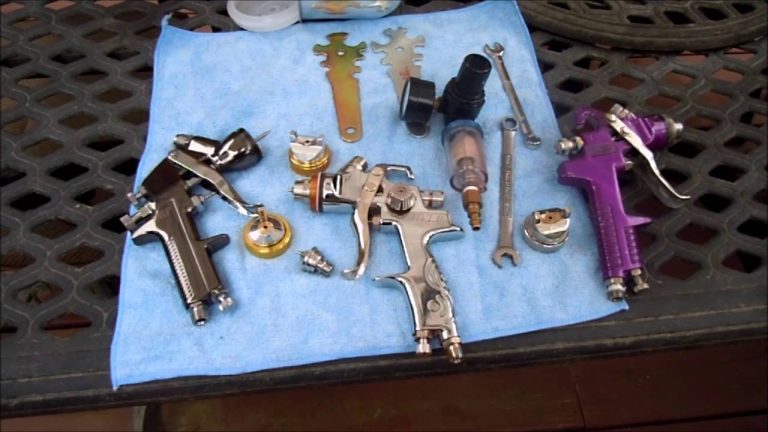January 2, 2023 (Brian Berletic – New Eastern Outlook) – US appears to be in the process of transferring its Patriot air defense missile system to Ukraine. CNN in its article, “Exclusive: US finalizing plans to send Patriot missile defense system to Ukraine,” claims the US will approve and then quickly ship the system or systems into Ukraine in just days after the decision is made.
Paradoxically, CNN admits that training the large numbers of Ukrainians necessary to operate the system will take months. This has left analysts speculating that in fact NATO personnel already familiar with the system will operate it merely posing as “Ukrainians.”
This represents a significant escalation. While Western forces are believed to be covertly operating across Ukraine against Russian forces in a variety of roles, Western personnel operating an ever-growing number of sophisticated weapons may lead to mission creep in terms of other sophisticated Western weapons including Western aircraft and tanks entering the conflict with Western operators behind the controls.
The decision to send Patriot missiles follows a now steady tempo of Russian missile and drone strikes across Ukraine targeting military and dual-use infrastructure including the power grid. The Western media admits Ukraine’s own Soviet-era air defense systems are dwindling in number and running low on interceptor missiles.
The Financial Times in its article, “Military briefing: escalating air war depletes Ukraine’s weapons stockpile,” admits:
…ammunition and spares for the S300 and Buk systems, the mainstay of Ukraine’s air defences, are dwindling. Ukrainian officials have confirmed a claim by British military intelligence that Russia has been firing X-55 nuclear missiles — with the nuclear warhead replaced by an inert one — simply to exhaust Ukrainian air defences.
The article notes that buying additional ammunition and spare parts for the systems is not practical. It also notes efforts by the West to provide Ukraine their own air defense systems, however such systems suffer from similar problems in terms of limited quantities and limited access to ammunition.
Financial Times cites the German “Gepard” mobile anti-aircraft gun as being “highly effective.” No evidence was provided to substantiate that claim and ironically, shortly after the article was published, shortages of ammunition for Gepard systems were reported as was Switzerland’s unwillingness to supply additional ammunition to Ukraine.
Germany’s Rheinmetall company has announced it would expand ammunition production to compensate for Switzerland’s decision according to Anadolu Agency, but production would not begin until June at the earliest and Ukraine would not begin receiving ammunition until at least July and only if the German government places an order for the 35mm rounds the Gepard fires.
IRIS-T and NASAMS, two Western short to medium range air defense missile systems have been provided to Ukraine, albeit in small numbers that will increase incrementally over the course of several years. This represents a rate far too slow to replace Ukraine’s dwindling Soviet-era air defense systems.
Considering this reality, the decision by the US to transfer Patriot missile systems to Ukraine may not be because Washington believes they can make a difference, but simply because the US and its allies have nothing else more appropriate or numerous to send in its place.
But even the Patriot air defense system is plagued with problems ranging from its own critical shortage of ammunition to its inability to provide defense against drones and cruise missiles, the very systems they will be tasked with protecting Ukrainian skies against.
Patriot Missiles: Too Few, Too Feeble
Far from “Russian propaganda,” the Patriot’s shortcomings have been reported by the Western media for years. Al Jazeera in an early 2022 article, “Saudi Arabia may run out of interceptor missiles in ‘months’,” would admit to Saudi stockpiles of Patriot interceptor missiles running low and the inability of the US to manufacture enough to replace them.
The Wall Street Journal would report in March 2022 that additional missiles were eventually acquired, but not because the US was able to manufacture more, and instead because the US convinced Saudi Arabia’s neighbors to transfer missiles from their own stockpiles to Saudi air defense forces.
Faced with a growing shortage of missiles, Lockheed Martin pledged in 2018 to double annual missile production from 250 to 500, according to Defense News. By 2021, Camden News would report that Lockheed was on course to reaching its 500 missiles per year goal by 2024 after building a new 85,000 square foot expansion to existing production facilities.
However, even at 500 missiles a year, and if every single missile was subsequently sent directly to Ukraine, it would not be nearly enough to match the number of cruise missiles, drones, and other long-range precision weapons Russia is using as part of its ongoing special military operation.
The New York Times in an article titled, “Russia Is Using Old Ukrainian Missiles Against Ukraine, General Says,” cites Ukrainian sources who claim Russia is likely building at least 40 cruise missiles a month. Over the course of a year that works out to 480 cruise missiles. Considering the Patriot missile system falls far short of 100% effectiveness, the idea that 500 Patriot missiles could protect Ukraine against 480 Russian cruise missiles is unrealistic.
Annual missile production for Russia is likely higher, however. From October onward alone, the BBC reports that Russia has fired over 1,000 missiles and drones at targets across Ukraine. This is twice the number of missiles Lockheed plans on producing annually.
This reality is so obvious that Western analysts have commented publicly about their doubts regarding any impact Patriot missiles will have. Breaking Defense in its article, “Patriot missile system not a panacea for Ukraine, experts warn,” would cite a missile defense expert with the Center for Strategic and International Studies, Tom Karako, who called the transfer of Patriot missiles to Ukraine “a political gesture of support.”
The article would also note, citing Karako, that:
“We need to be careful about these scarce, precious assets,” Karako said. “While we’re only sending one battery, once it’s there, it’s probably not going to come back. And if they start expending munitions, they’re going to ask for more, right? And we don’t have just tons and tons of PAC-2s and PAC-3s [missiles] lying around that we can afford.
Karako would also point out that Patriots are needed for “deterring a Taiwan conflict,” highlighting the fact that the steady depletion of Western weapon stockpiles in its proxy war with Russia is not happening in a geopolitical vacuum and impacts the West’s ability to menace other nations in other regions of the planet – especially in East Asia.
The same article also pointed out how expensive Patriot missiles are versus the relatively cheap drones they would be attempting to intercept. But that’s even if the Patriot missile system can intercept them.
NBC News in a 2019 article titled, “Why U.S. Patriot missiles failed to stop drones and cruise missiles attacking Saudi oil sites,” would note how US-provided Patriot missile systems failed against cruise missiles and “triangular” drones used by Yemen against Saudi oil production facilities.
Despite Patriot missile batteries guarding the facilities, Saudi forces resorted to small arms fire in a failed attempt to down the drones. One attack temporarily disrupted half of Saudi Arabia’s daily oil output.
The article claims:
Drones and missiles can be detected by radar, but they tend to have small radar signatures and can fly close to the ground, sharply reducing the detection range and thus opportunities to fire on them from far away. They also are easy to maneuver, allowing them to hit the coverage gaps between radars and Patriot batteries. And drones and cruise missiles are often cheaper than a $2 million or $3 million Patriot missile, meaning the supply of Patriots can be depleted much faster than the bevy of drones launching attacks.
NBC News is describing precisely the threats Patriot missile systems transferred to Ukraine will face, but on a much larger and more sophisticated scale.
The article discusses extensive measures the US is taking to counter threats the Patriot is not well-suited to defend against – measures that only began being fielded as of 2021 – but not measures the US is prepared or even able to send to Ukraine in large numbers.
The US and its NATO allies have long neglected ground-based air defense systems in favor of achieving and maintaining air superiority over any potential battlefield through the use of warplanes. Several decades of fighting “small wars” against adversaries lacking anything resembling an air force has only compounded the problem.
Just as it will take years and large amounts of money to solve the current weapons and ammunition shortage the West faces as it continues to arm Ukraine, creating air defense systems in both the quantities and quality Ukraine’s requirements demand will take more time than Ukraine has, and more resources than the West may care to spend.
While it is common knowledge that wars are won through superior logistics, military technology, and strategy, one would be hard-pressed to recall when any war was won by “a political gesture of support.”
Brian Berletic is a Bangkok-based geopolitical researcher and writer, especially for the online magazine “New Eastern Outlook”.















